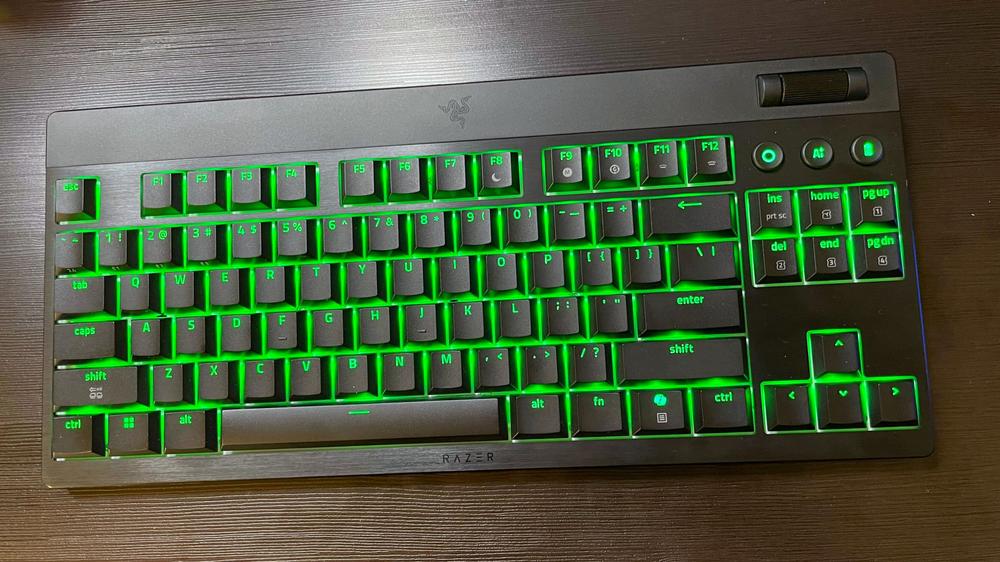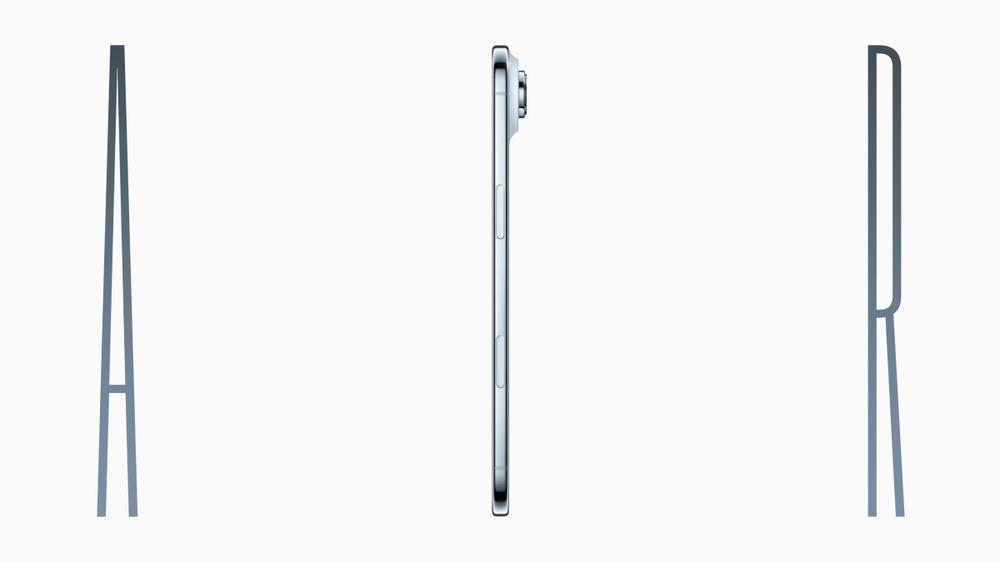I may sound like a broken record at this point, but it bears repeating that I've struggled to get excited about new peripherals as the years have gone on. So, I take note when something truly stands out or pushes tech forward. When it comes to the best gaming keyboards, however, things like varied form factors, magnetic switches, or extensive customization have kept me interested in a space that seems so crowded with competitors. Razer had some notable innovations with the BlackWidow V4 Pro 75 I reviewed (and made a splash with the recent updates in the BlackShark V3 headset and the Deathadder V4 mouse), and now with the slimmed-down BlackWidow V4 Low-Profile, it continues its streak of putting out noteworthy revamps within its tried-and-true product lines. Whether you go with the compact tenkeyless version or the full-sized model, they offer a performance and feel that's hard to find from thin form factors, making them solid keyboards all on their own.
Razer BlackWidow V4 Low-Profile – Design and Features
The BlackWidow V4 Low-Pro makes a stellar first impression out of the box. The brushed aluminum top looks sleek, the ultra-thin profile is a marvel to look at, and the density of the keyboard itself assures a certain build quality. Its similarly thin double-shot PBT keycaps complement the slim form factor, not even reaching an inch in height from the base to the top of a keycap. There are still internal layers to round out its build such as plate foam and case foam for dampening, although it's expectedly not quite as robust as a standard-profile keyboard. Considering the performance and features packed into the keyboard, however, it's an impressive piece of tech.
You'll find the wired-wireless toggle on the topside edge of the keyboard along with the USB-C port, and underneath the plank are the feet you can kick out to adjust the keyboard's angle at six or nine degrees. There's also a convenient slot to store the 2.4GHz wireless receiver, which is a small but nice touch that adds to the board's smart design. The top bar above the function row features a programmable clickable multimedia roller that comes in handy, not just for adjusting volume, but for pretty much anything you want to set it to do. It is a bit odd to have this entire bar on the TKL model for just the roller, however, and it feels like wasted space that could've either been trimmed or used for additional features. On the full-size version, you get individual play/forward/backward media buttons at least.
Below the scroll wheel are a few bespoke buttons – one universal media button that can be programmed, one for checking battery status, and one called the "AI Prompt Master" (the full-size model has a dedicated Bluetooth toggle here as well). The AI button feels more like a gimmick that's only there for chasing a trend; it's a shortcut that pulls up the Prompt Master program window where you punch in text to have it summarized through an AI engine, and is an example of AI being shoehorned in any place possible. On the other hand, the battery button is a neat feature highlighting battery life through the RGB lighting on the number row. It's also used to quickly swap to the keyboard's power saving mode that significantly extends battery life.
Otherwise, the BlackWidow V4 Low-Pro is a fairly straightforward keyboard that finds its footing by nailing the fundamentals – and that revolves around its mechanical switches. You can get it with the low-profile versions of the clicky Greens, tactile Oranges, or linear Yellows. These have shorter actuation points (1.2mm for the Greens and Yellows, 1.6mm for the Oranges) and travel distances (2.8mm for all three). This can technically be an advantage since inputs are sent out sooner along a keystroke compared to the typical 2.0mm actuation point, but it'll take a little getting used to if you're coming off of standard mechanical switches. One minor drawback is that keystrokes don't sound quite as satisfying as other keyboards, and I wouldn't describe these as "creamy" but rather "clacky," though not in a harsh way. However, what's important is that they're responsive and consistent whether you're gaming or typing, which is further supported with the ultra low-latency HyperSpeed tech through a 2.4GHz connection.
Razer BlackWidow V4 Low-Profile – Software and Customization
As with any of its gear, Razer Synapse is required in order to tweak the BlackWidow V4 Low-Pro (particularly Synapse 4, which is a revamped suite you'll need to install if you're still on Synapse 3). Like most of its keyboards, you have full access to Chroma RGB customization, letting you change backlighting colors, patterns, and behavior which can also be set to have different reactions to games you're playing or keystrokes. Furthermore, you can map your handful of media keys through Synapse, which gives the keyboard a little extra versatility.
Like most modern Razer keyboards, you can enable Snap Tap on the BlackWidow V4 Low-Pro, allowing simultaneous opposing cardinal direction (SOCD) inputs. As I've mentioned in previous keyboard reviews, it's a contentious feature that has been banned in the pro gaming scene and can get you kicked from Steam games. It gives an advantage by cutting out the human error when trying to rapidly move in opposite directions as fast as possible, and in a competitive shooter such as Counter-Strike 2, it provides a tangible benefit with quick-strafing and precise positioning and making yourself a hard target.
When it comes to the AI Prompt Master button, it functions as a shortcut that pulls up a breakout window from Synapse. Here, you punch in text for a language model of your choosing (either ChatGPT or Copilot) to then rephrase based on the parameters you set – you have options for general length, depth, and tone of the summary you get back. Razer posits this as a way to get quick guide-style help in games or distill patch notes, so its usefulness is largely contingent upon the effectiveness of the language model. In my experience, it's just not worth the hassle as the results have not been helpful, and at best, are just shortcuts to information we can easily seek on our own (as opposed to Razer's upcoming gaming copilot that is at least showing promise for what it's setting out to accomplish).
Razer BlackWidow V4 Low-Profile – Gaming and Performance
My BlackWidow V4 Low-Pro came with the proprietary Razer Yellow linear switches, which is just how I like my mechanical keyboards. They've been some of my favorite switches outside of the Hall Effect magnetic ones on my current top keyboards like the Keychron K4 HE or Pulsar PCMK 2 HE. It's proof that mechanical is still viable for high performance in gaming, evident in the time I put into Battlefield 6 and Counter-Strike 2.
I played roughly 10 hours of the Battlefield 6 beta on PC using this keyboard and the short throw of the low-profile switches made me feel nimble in the heat of combat. That agility may not have made a difference in my kill-death ratio at the end of the day, but it's the level of comfort and performance these switches offer me in a competitive game. Sprinting in and out of firefights, mantling over rubble to reach cover, or swapping between gear to support my team in the midst of Battlefield's chaos all happen in quick succession so it's imperative that my keyboard keeps up, and the BlackWidow V4 Low-Pro certainly did.
For a game that demands precision such as Counter-Strike 2, it took a few rounds for me to adjust to the specific throw distance and actuation force of these Razer Yellow switches (and muscle memory plays a major part in a game such as this). But once I got used to them, it was smooth sailing in terms of feeling in control of my movements and keyboard-based actions. I'd have no problem recommending it to those who take competitive gaming seriously.

 I want to love Apple’s new iPhone Air, but the iPhone 17 is a better deal
I want to love Apple’s new iPhone Air, but the iPhone 17 is a better deal